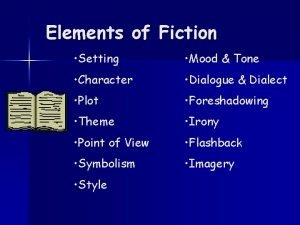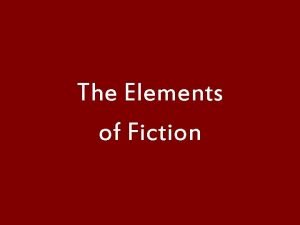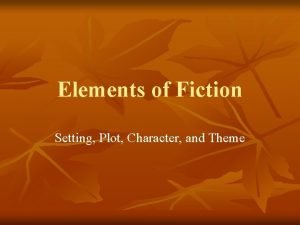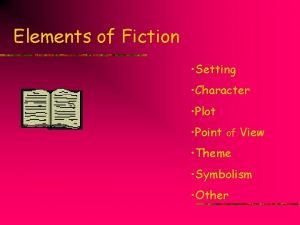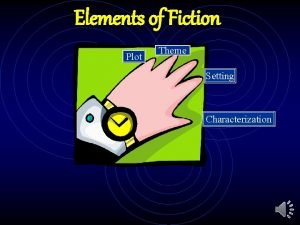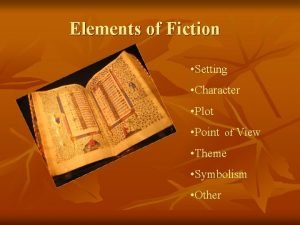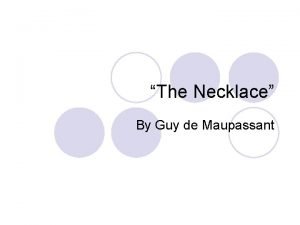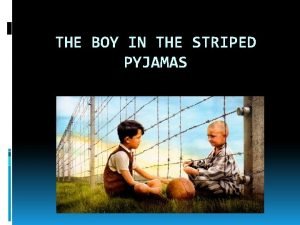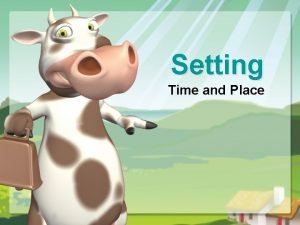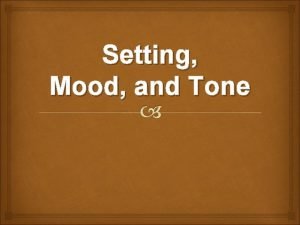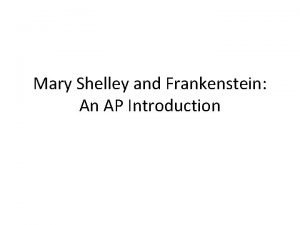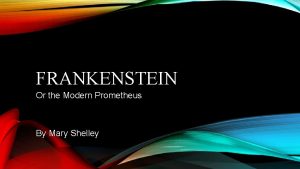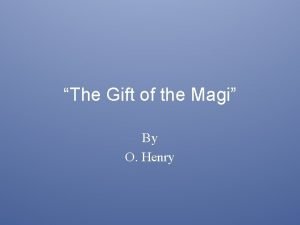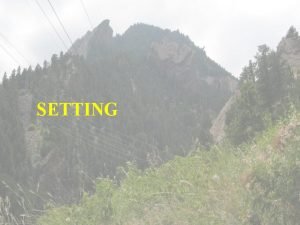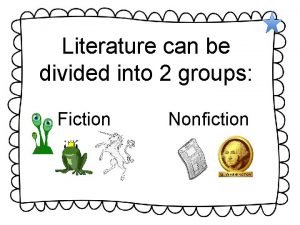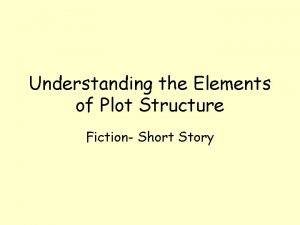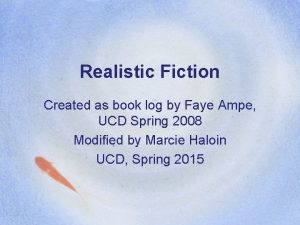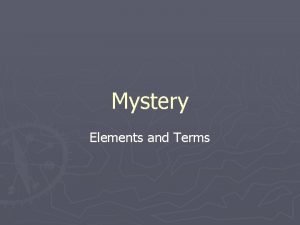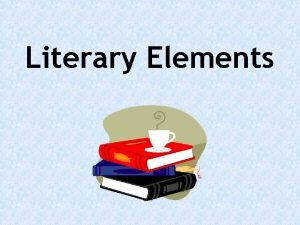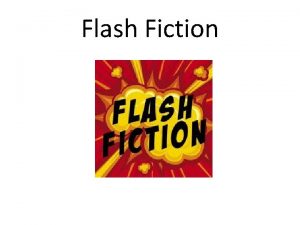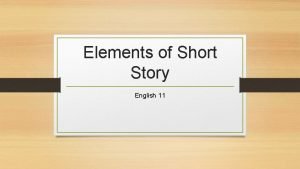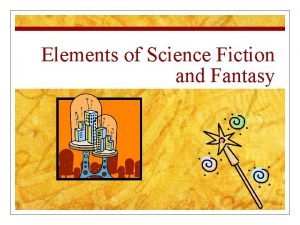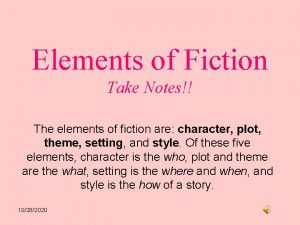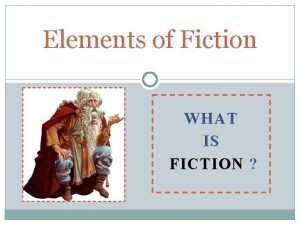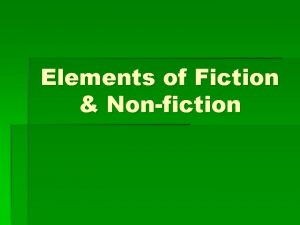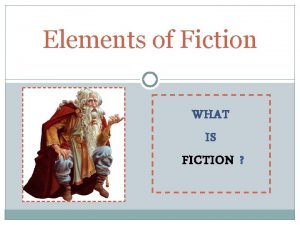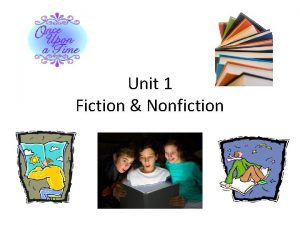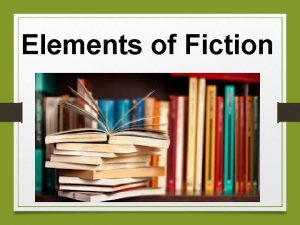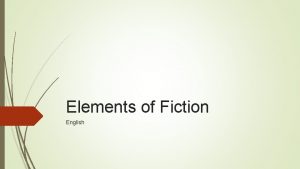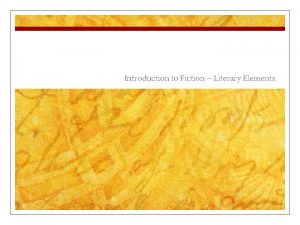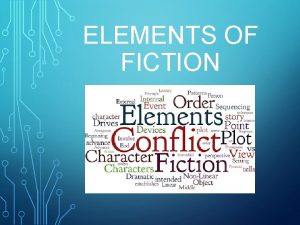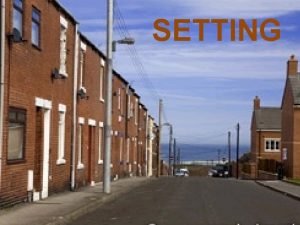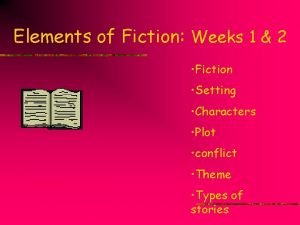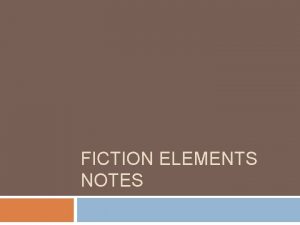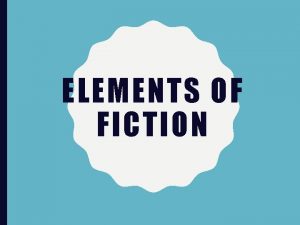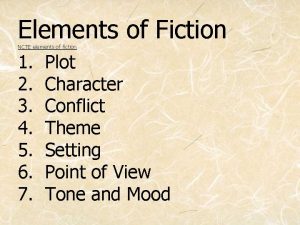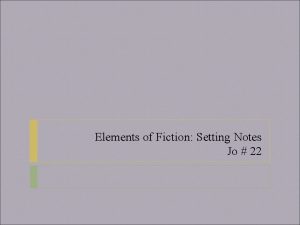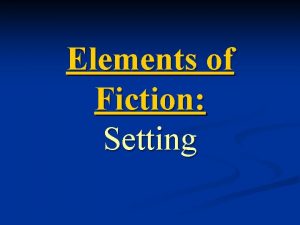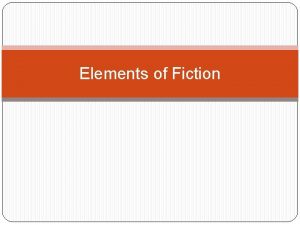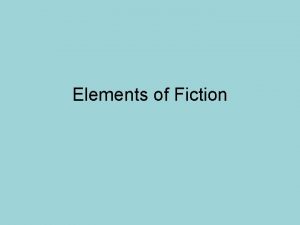The Elements of Fiction Setting the time place





























- Slides: 29

The Elements of Fiction

Setting the time, place, and general environment in which a piece of fiction occurs

Functions …makes fiction more credible/believable …to establish mood …to illuminate/highlight a character • setting can be similar to a character • setting can contrast with a character …to provide a source of conflict

All the Places to Love by Patricia Mac. Lachlan Answer the following questions in your RS – Is the setting established briefly or in great detail? Explain. – Is the time and place clearly defined or is it vague and unclear? – Does the writer give you clues to the setting? If so, what are they? – Is the setting important in this story? Could the story be successful without the setting? Could the story take place somewhere else? – How does it establish mood? What is the mood?

Characterization § the method an author uses to get the reader to know the characters § the act of creating and developing the characters § development of characters

Techniques of Characterization 1. Speech - look at what a character says to other characters 2. Thought - look at what a character thinks; this tells us more than what he/she just says 3. Actions - look at what a character does 4. Appearance - look at the way a character appears/dresses/looks; may reveal personality 5. Conversation of others - look at what other characters say about a character 6. Author’s direct comments - the author tells you what you should think/know about the character(s)

Character Web for Russell from “No Gumption” A Writer Salesman for the SEP Russell Feels Rejected No Gumption Lazy

A Boy Called Slow by Joseph Bruchac What do we learn about Slow through § his speech? § his thoughts? § his actions? § his appearance? § the conversation of others? § the author’s direct comments?

Plot the sequence of events that make up a story Three different time orders… – chronological – flashback – interweaving

Story Pattern of the Plot ØExposition ØRising Action ØClimax ØResolution/Denouement

Four Conflicts Øman v himself Øman v man Øman v environment Øman v supernatural

Foreshadowing Øpoints or hints toward future events Øbuilds tension or suspense Øprepares readers to predict or anticipate future events

Jumanji by Chris Van Allsburg – Did the author use chronological, flashback, or interweaving order? – Make a chart and list events in the Exposition; Rising Action; Climax; Resolution/Denouement. – What was the conflict? How do you know? • man v himself • man v man • man v environment • man v supernatural – Was there foreshadowing? Was the plot completely resolved? Does the tension continue?

Exposition • • Parents go out for night Peter and Judy get bored Find Jumanji at park Instructions say game MUST end once it is started

Rising Action • • • Peter rolls, and lion attacks Wants to quit, Judy says, “No. ” Judy rolls, and monkeys appear in kitchen Peter causes monsoon season to begin Guide gets lost when Judy rolls Peter gets sleeping sickness Rhinos stampede on Judy’s turn Peter wakes up, and rolls; python appears Volcano erupts causing steam to fill room

Climax • Judy gets free roll with shortcut • She gets two sixes • Slams piece on board and yells, “JUMANJI!” • Everything disappears • Kids put game in box • Game is placed back under tree

Resolution/Denouement • • Parents wake up kids Get ready for dinner Talk with Mrs. Budwing Daniel and Walter are seen with box in park • Hmmm? ? ?

Man v… v. Himself? v. Man? v. Environment? v. Supernatural?

Point of View the vantage point or perspective from which fiction is told Types v. First Person or Personal v. First Person Observer v. Third Person or Omniscient

Symbol anything that stands for or represents an idea or something else a shortcut to meaning

Two Types of Symbols ØConventional – universally agreed upon ideas ØCreated – author creates it him/herself

Fly Away Home by Eve Bunting • From what point of view was the story told? How do you know? • What is a symbol from the story? What does it represent? Is it conventional or created?

Fly Away Home by Eve Bunting • How important was setting in the story? • Which of the six techniques of characterization were used? • What was the climax of the story? • What was the major conflict? conflict How do we know?

Mood feeling/atmosphere created by a piece of fiction the emotional charge of a piece of fiction Mood is created by – – plot. characters. setting. author’s word choice.

The Widow’s Broom by Chris Van Allsburg Answer the following questions in your RS: v How would you describe the mood? mood v How is the mood set by the plot? characters? setting? v What was the climax of the story? v What was the conflict? conflict

Theme the central message, message concern, or purpose of a work of fiction – not a summary of the plot – stimulates the intellect – may be • stated (the author tells you) • implied (you have to figure it out on your own)

The Wretched Stone by Chris Van Allsburg Answer the following questions in your RS: § What is the symbol in the book? What does it represent? Is it conventional or created? created § What is theme? theme § Is it stated or implied?

Tone/Voice the writer’s attitude toward his/her audience and subject Tone is identified by Ø things the author points out. Ø words the author uses. Ø how the author writes the fiction.

The Three Pigs by David Weisner The True Story of the 3 Little Pigs by Scieszka & Smith • How would you describe the tone of each book? • What did the author point out? What words did he/she use? How did he/she write the story? • How could you change the tone to make the story different?
 Narrative nonfiction elements
Narrative nonfiction elements Tone of character
Tone of character Elements of fiction setting
Elements of fiction setting Elements of fiction setting
Elements of fiction setting Elements of fiction setting
Elements of fiction setting Characterization in a story
Characterization in a story Setting elements of fiction
Setting elements of fiction Elements of fiction setting
Elements of fiction setting Necklace
Necklace Setting in the boy in the striped pajamas
Setting in the boy in the striped pajamas What is seeting
What is seeting Tone in literature
Tone in literature Frankenstein setting time and place
Frankenstein setting time and place During may of 1816 mary and her future husband
During may of 1816 mary and her future husband Setting includes the time period place and of a story
Setting includes the time period place and of a story Summary of the gift of the magi
Summary of the gift of the magi What is setting
What is setting It is a genre of speculative fiction
It is a genre of speculative fiction Contemporary realism literature
Contemporary realism literature Historical story
Historical story Plot structure of fiction
Plot structure of fiction Heartbeat sharon creech summary
Heartbeat sharon creech summary Elements of realistic fiction
Elements of realistic fiction Elements of a mystery genre
Elements of a mystery genre Cinderella internal conflict
Cinderella internal conflict Flash fiction vs short story
Flash fiction vs short story Five elements
Five elements Key elements of science fiction
Key elements of science fiction Elements in science fiction
Elements in science fiction Theme elements of fiction
Theme elements of fiction

